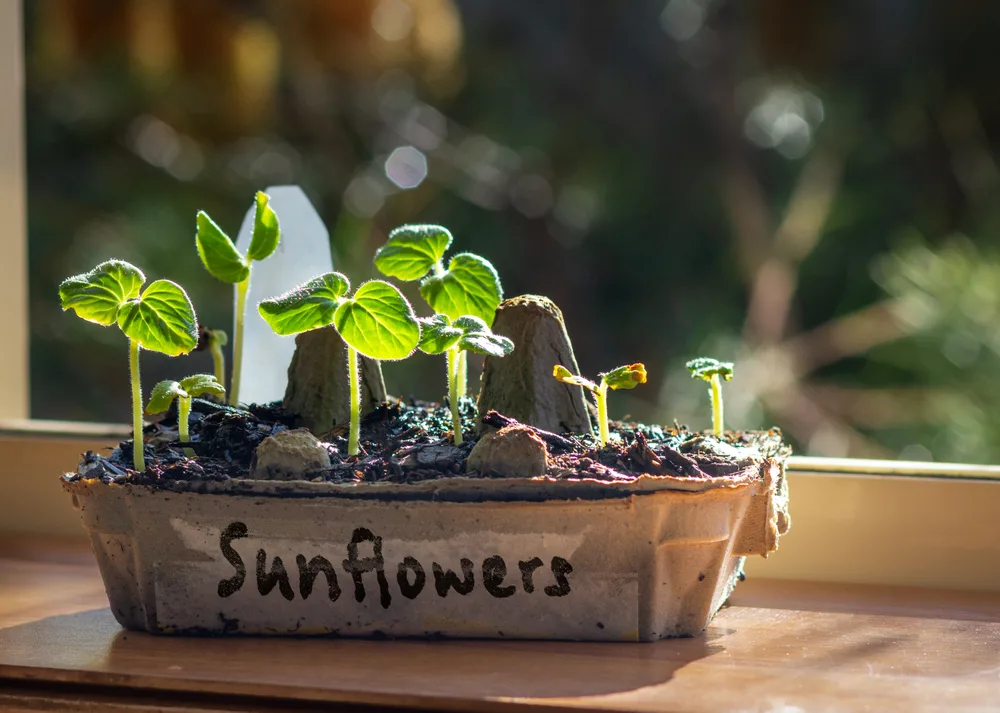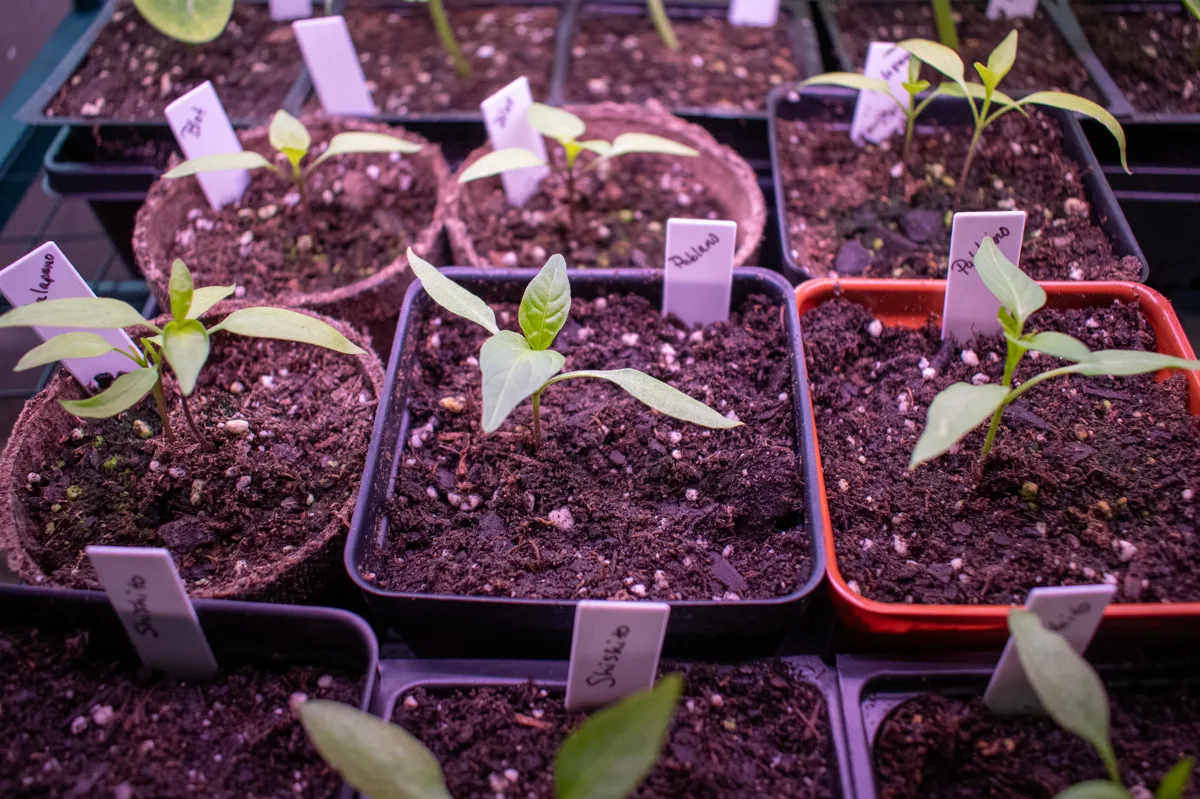
It’s about this time of year that every gardener gets what I refer to as “the green itch.” The holidays have come and gone. Things have gone abruptly quiet, and spring is still quite a way off. It’s when we start daydreaming of bright sunshine, warm earth and the smell of tomato leaves.
That is until we look out the window and remember that it’s still very much winter.
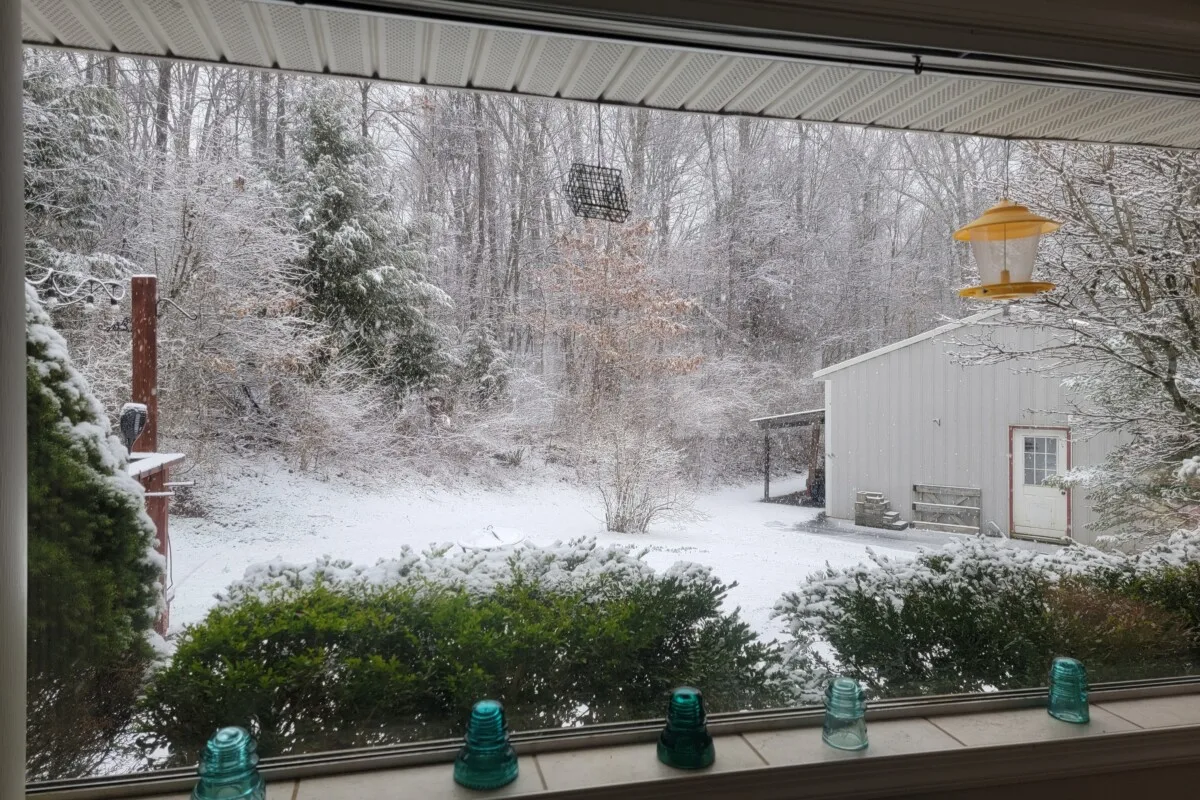
If the “green itch” gets to be too persistent, don’t worry; there are plenty of seeds you can sow early in the year.
In fact, it’s probably better if you do get growing in January and February. There are a lot of things to do even now to ensure a successful garden, especially if you live in an area with a short growing season.
Many of your favorite veggies can be started indoors or even outside if they’re covered. Here are fifteen different veggies you can sow right now to scratch that green itch.
Sowing seeds in January and February comes with its own set of dos and don’ts, which is why you’ll want to read my tips (from personal trial and error) for early sowing success at the end.
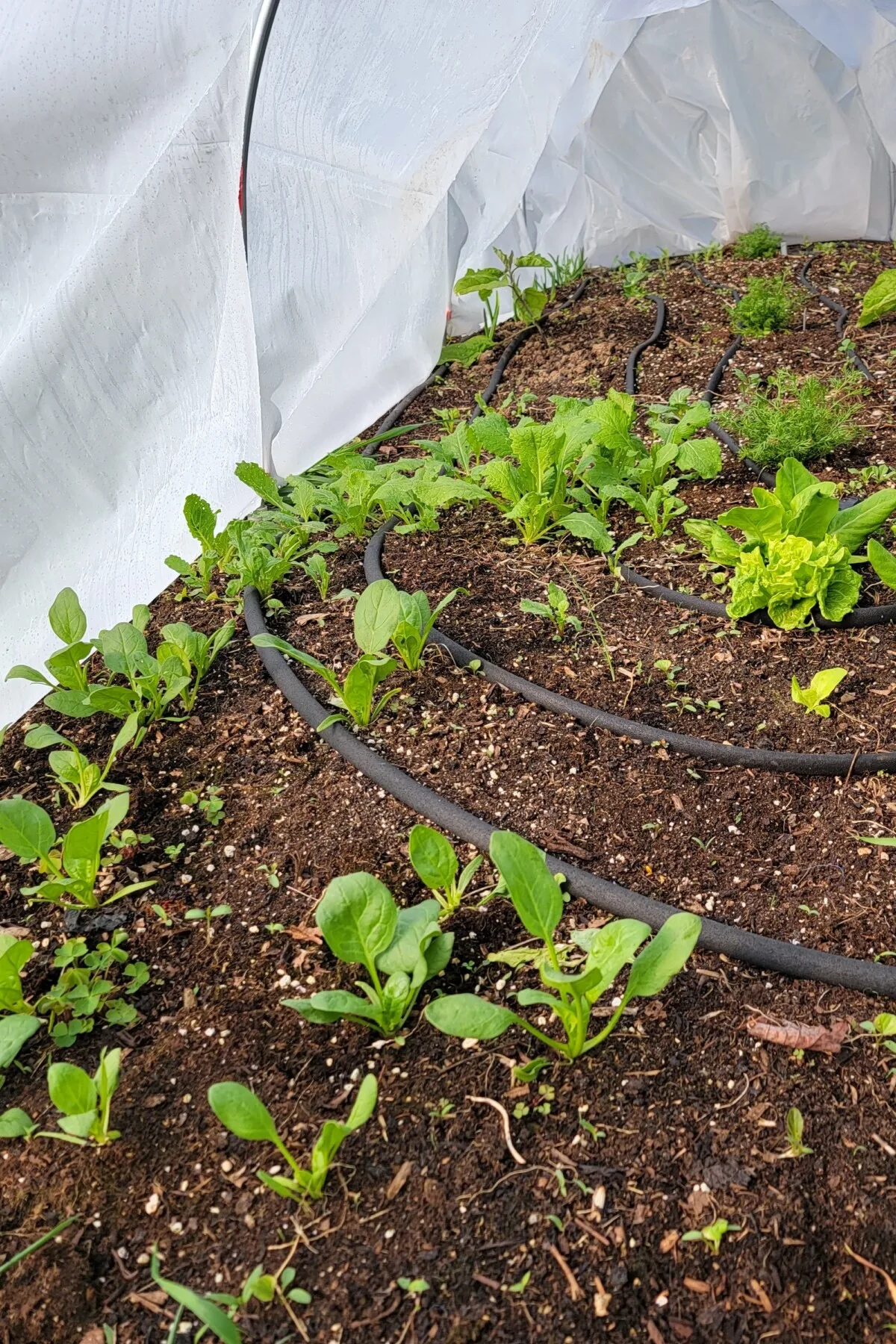
15 Vegetable Seeds to Sow in Mid to Late-Winter
1. Tomatoes
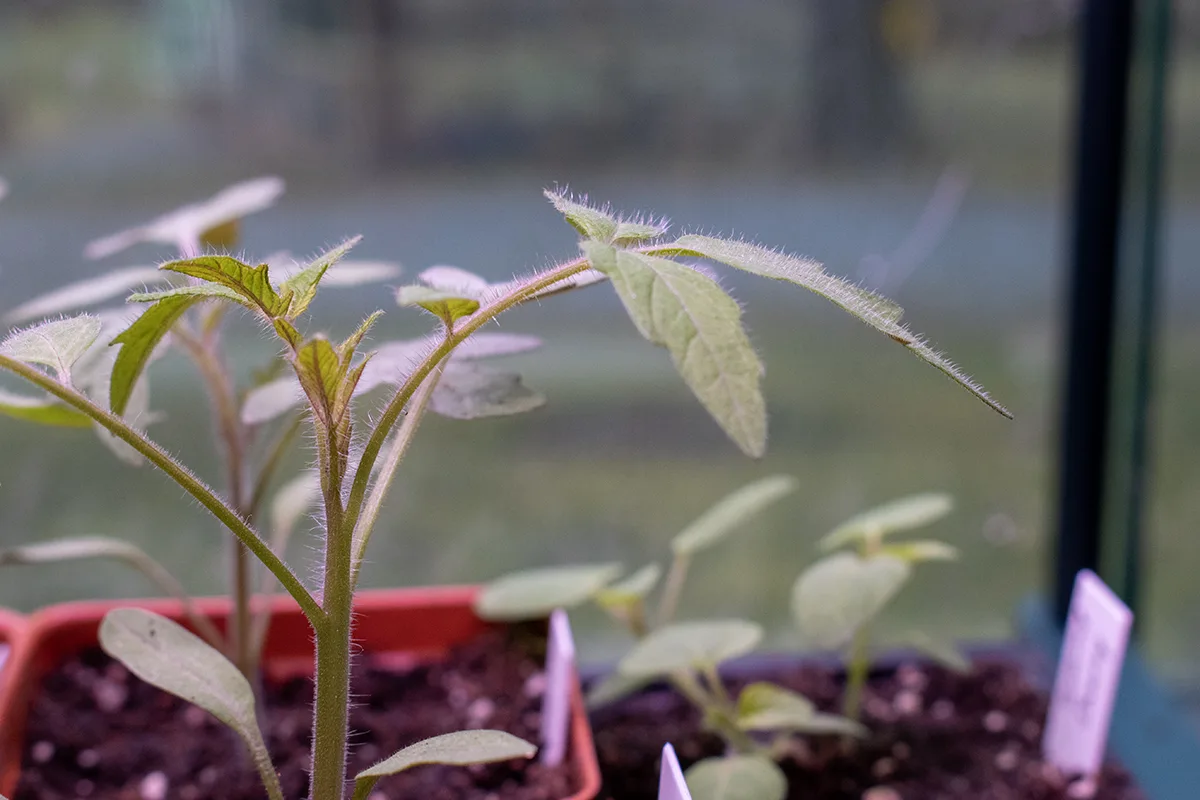
Most seed packets suggest starting tomatoes indoors eight weeks before your final frost date. However, if you have a short growing season where you live, starting them much earlier will ensure you get a nice harvest within the amount of time you have.
Even if you don’t live in a short growing season climate, starting tomatoes early means bigger, well-established plants when it’s time to transplant them outdoors. Especially if you follow my potting up method. (It’s pretty brilliant if I do say so myself.)
Tomatoes germinate between 60 and 80F. Keep that in mind if your house is cool due to cold winter weather. And don’t forget to read to the end for some helpful tips.
2. Sweet Peppers
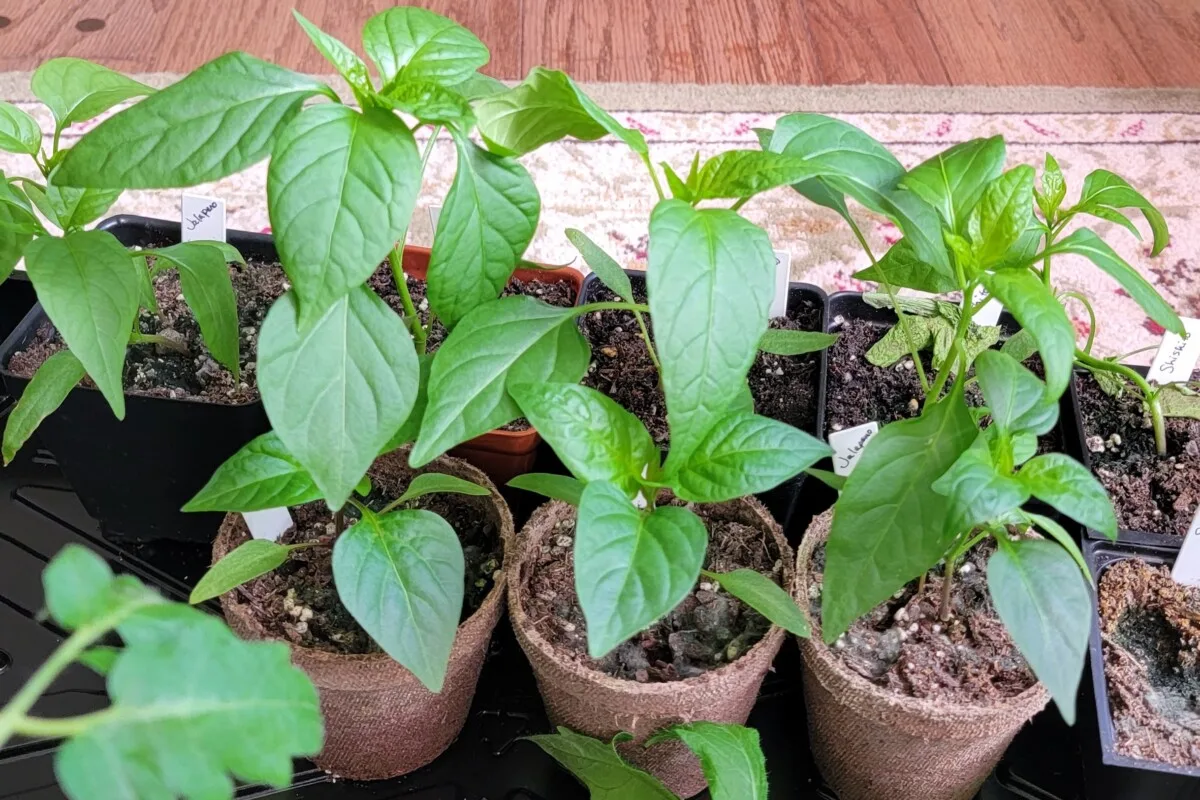
Peppers need a long growing season, so the bigger head start you give them, the larger your crop will be this summer. Naturally, this holds for short-season climates, making it even more important to start your peppers now.
Peppers won’t germinate below a minimum of 60F, and their ideal germination temperatures are around 80-90F.
3. Hot or Chili Peppers
Just like sweet peppers, chili peppers require a long growing season for a bumper crop and similarly warm soil temps for germination. If you’re looking to melt your face off with some seriously hot peppers this year, get started now.
And if you need a little inspiration, I’ve put together a list of some great chili peppers to grow this year. There are peppers for all heat tolerances on my list, including the infamous Carolina Reaper. (I grew them one year and then was too afraid to pick them.)
4. Eggplant
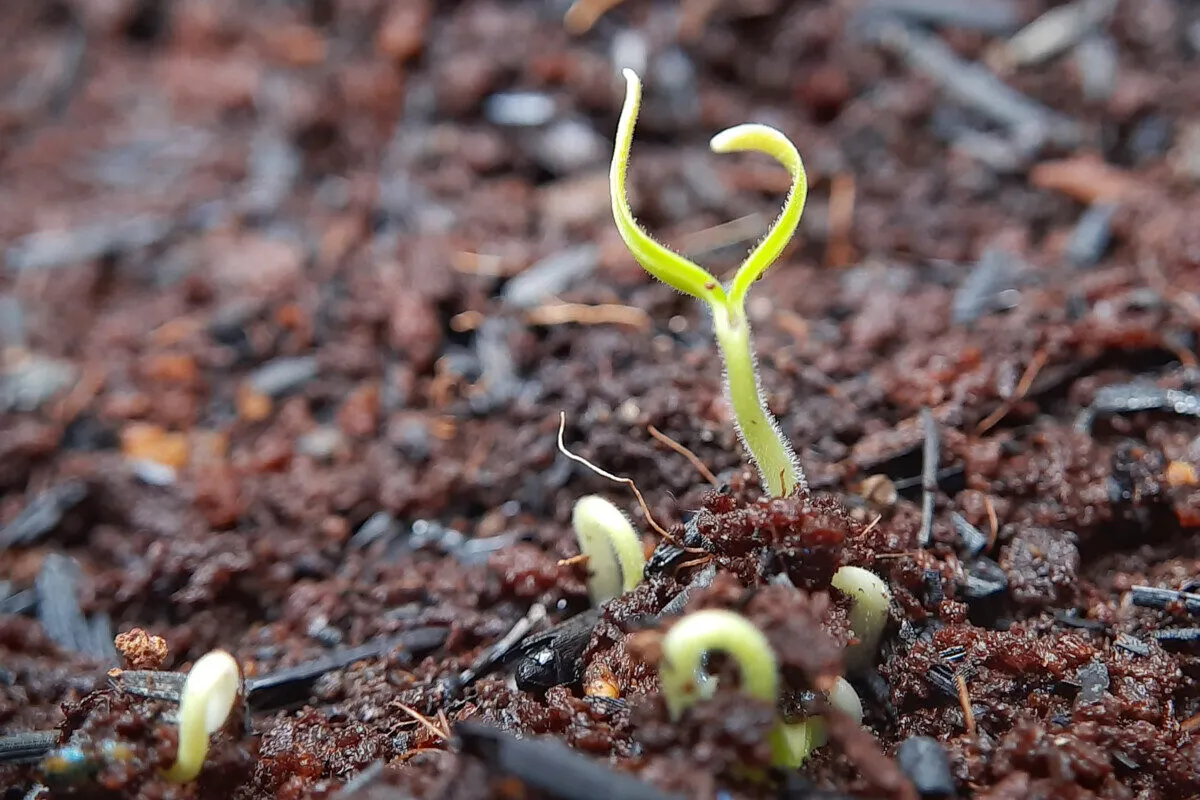
Finally, if you’re a cool climate gardener and have your heart set on eggplant this summer, get them started now. Much like their cousins, tomatoes and peppers, eggplants also need a long, warm summer for a bumper crop. Give yourself a jump on the season by starting them indoors.
5. Peas
Speaking of peas…
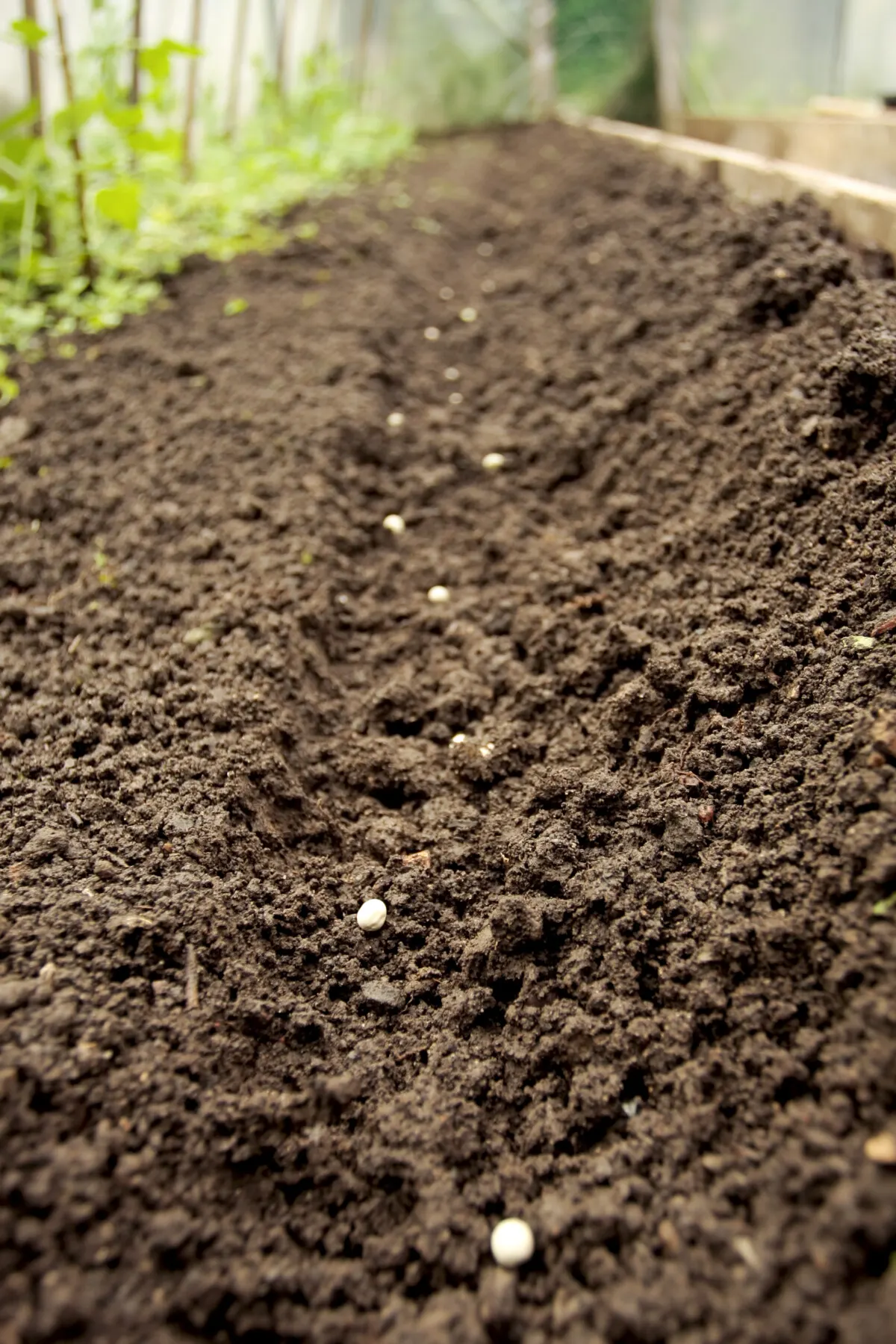
If you’re new to gardening, you can’t go wrong with peas. Whether you’re looking for shelling peas, sugar snap peas, or even snow peas, they’re all great choices for early sowing.
Peas germinate between 40F and 75F. With that in mind, you could easily grow them on your windowsill, even in a cool house.
6. Fava Beans
If you’ve been wanting to give fava beans a try, get a jump on the season and plant them early. Fava beans are a pretty hardy crop. Some varieties, like Aquadulce Claudia, will even overwinter in cooler climates.
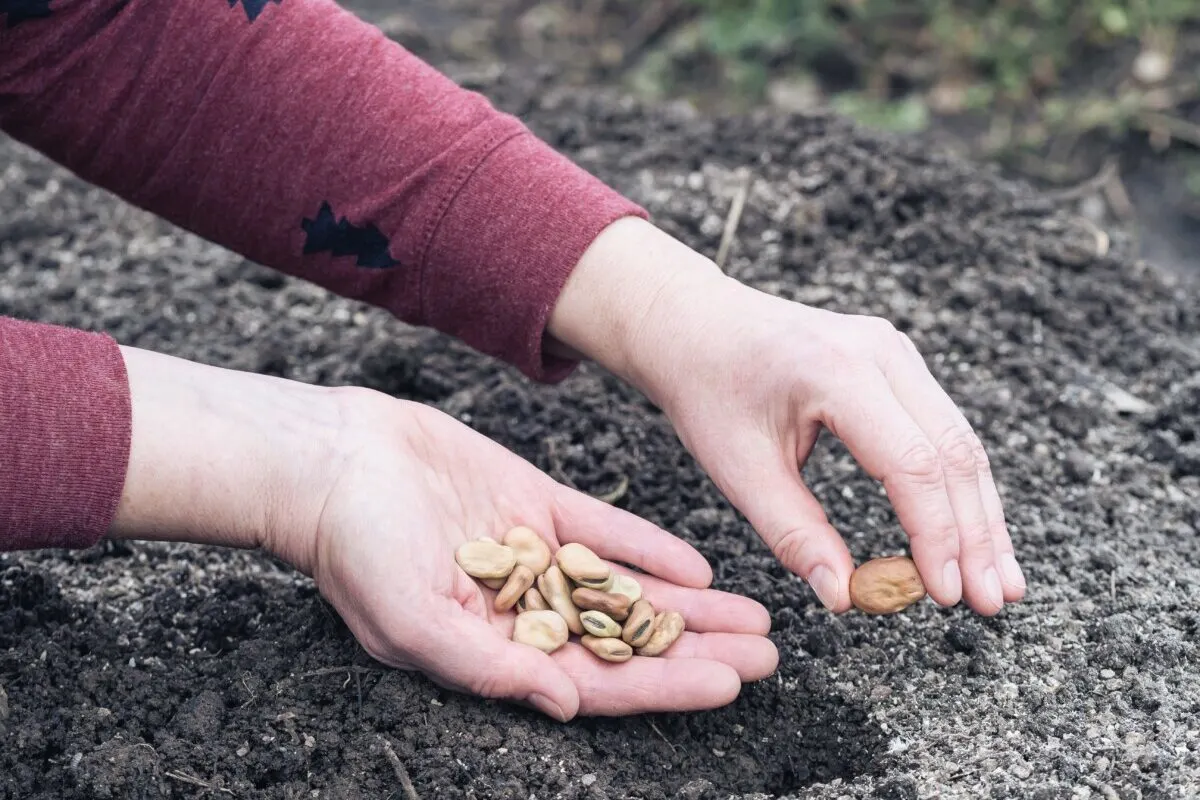
Ideal germination temperatures are around 52F, but you can even get good results at 45F as long as you grow them under cover.
7. Onion
Sow onion seeds early in the year, and you can grow much larger onions in the long run. Sow seeds of large onion varieties like ‘Bunton’s Showstopper’ and ‘Ailsa Craig’ indoors early in the year for large bulbs later in the season.
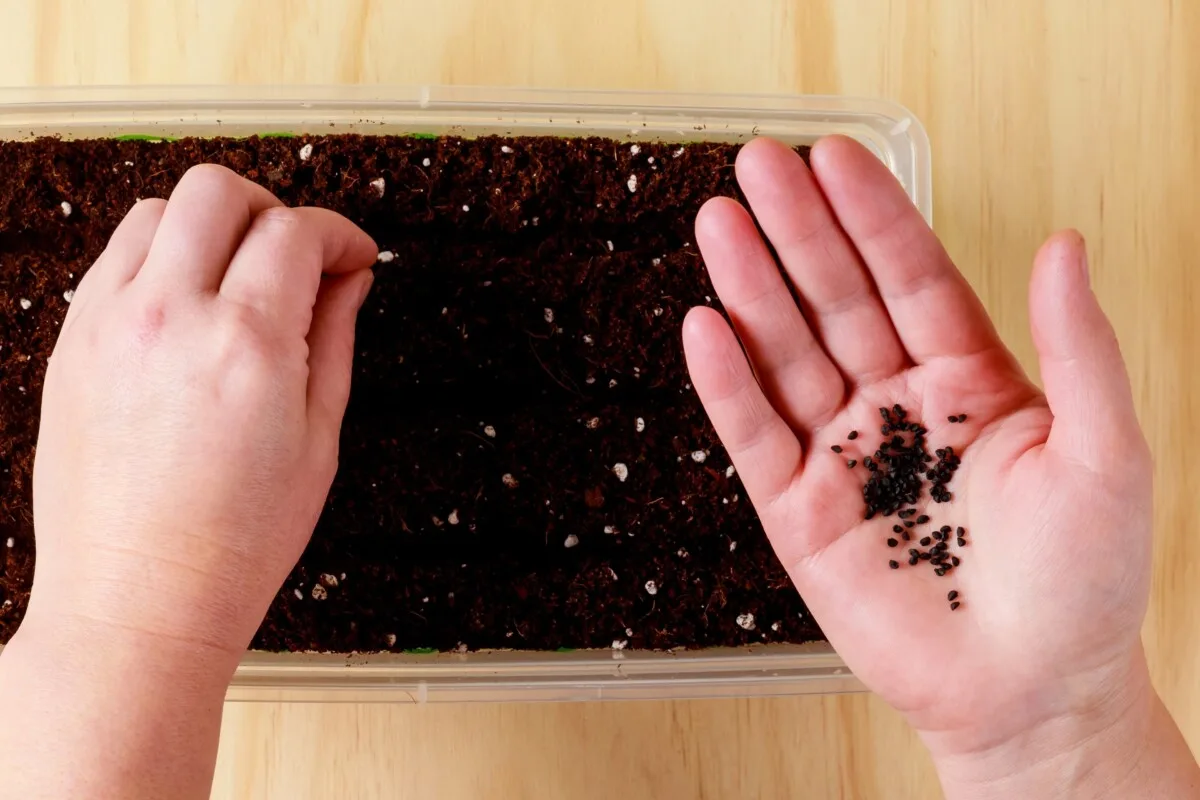
Sow scallions under cover, and you’ll enjoy them long before you can plant them in the spring. Try varieties such as ‘Ichikura’ and ‘Summer Isle’ for example.
While you can get onions to germinate around 35F, you’ll have better germination rates with temps around 50F.
8. Leek
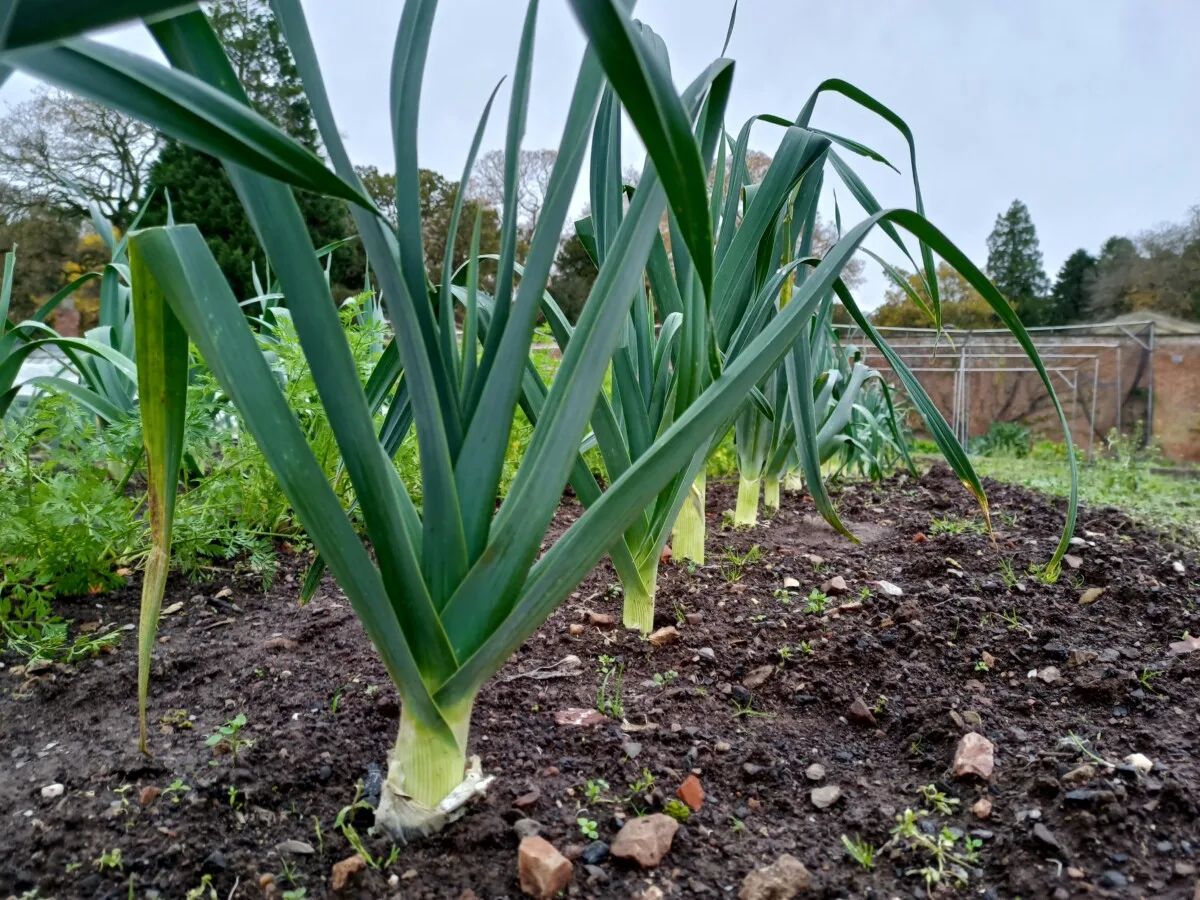
Leeks are such an underrated vegetable, but they’re worth the longer growing season they require for their less pungent, more delicate flavor than other allium family members.
Leeks are another member of the allium family to consider sowing early.
You might want to try starting them indoors as they have the best germination rates at temperatures between 65F and 85F.
9. Celeriac
This slow-growing veggie is exceptionally hardy, making it another crop to consider sowing indoors or under cover early in the year before spring arrives.
Start this crop early, and you should have large bulbs for eating towards the tail end of the year.
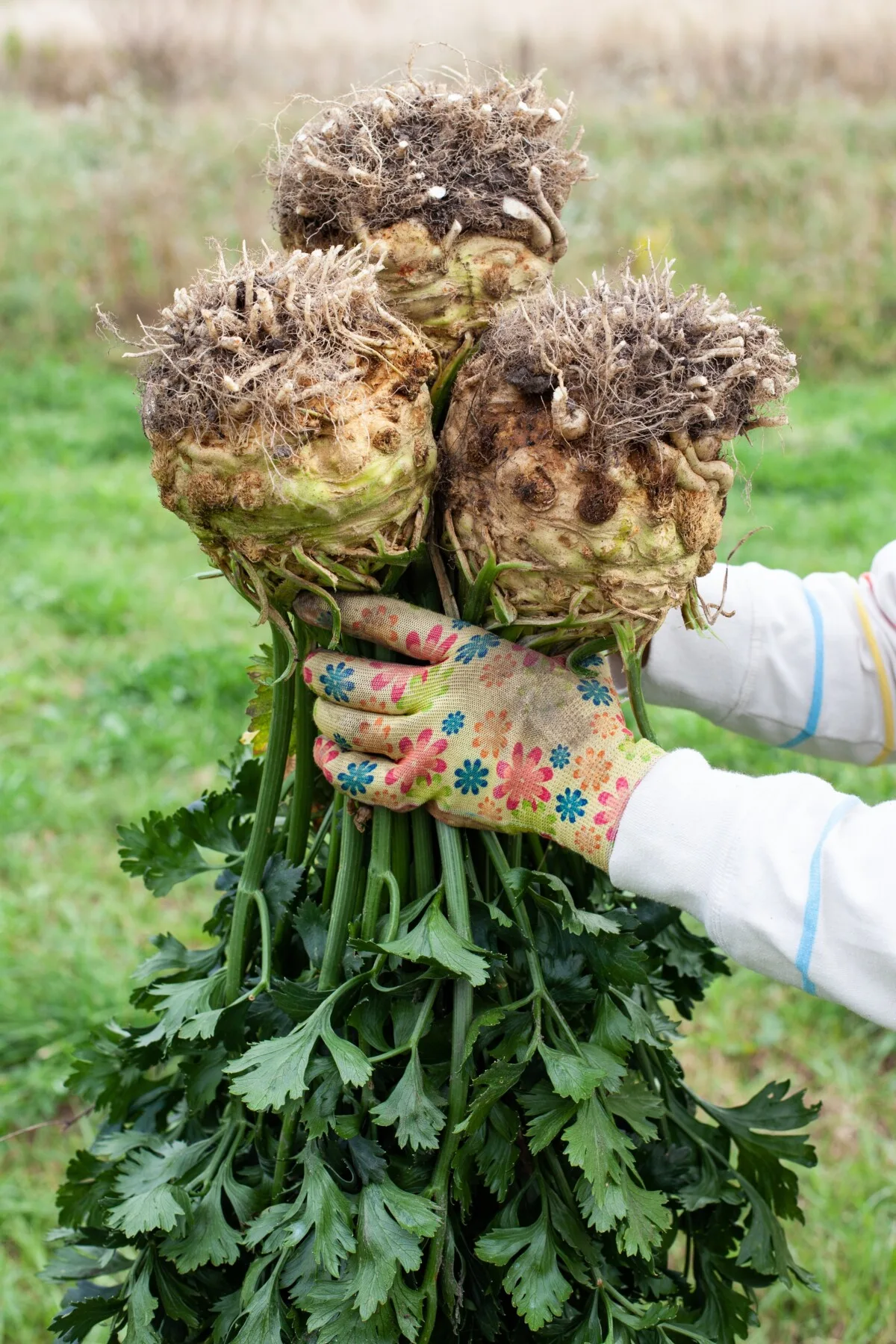
To get them to germinate, you’ll need consistent temps between 60F-70F. Once the seeds have germinated, though, celeriac seedlings will grow in much cooler conditions.
10. Celery
Celery is also a great choice for early sowing, although you’ll want to choose a bolt-resistant variety like ‘Lathom Self-Blanching.’
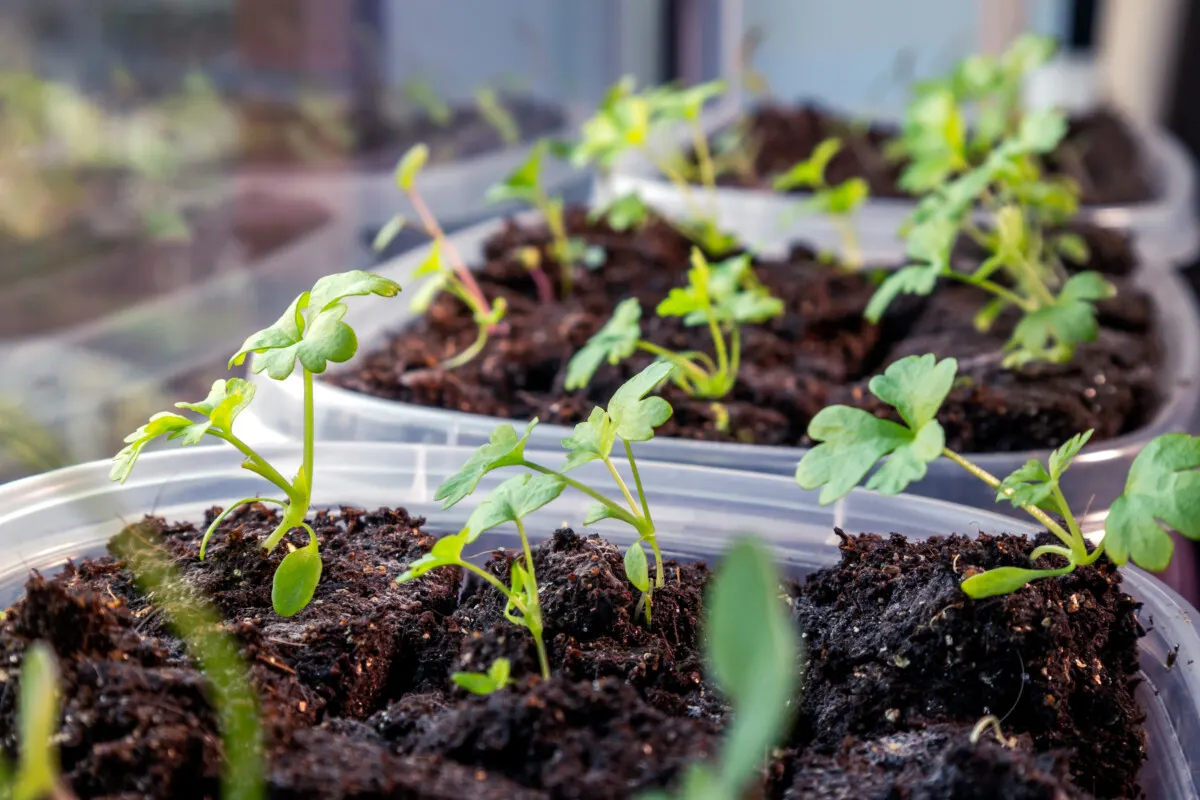
Celery seeds will germinate around 40F but do best when temperatures are between 60F-70F.
11. Lettuce
One of the easiest plants to grow throughout the year – indoors and out – is lettuce.
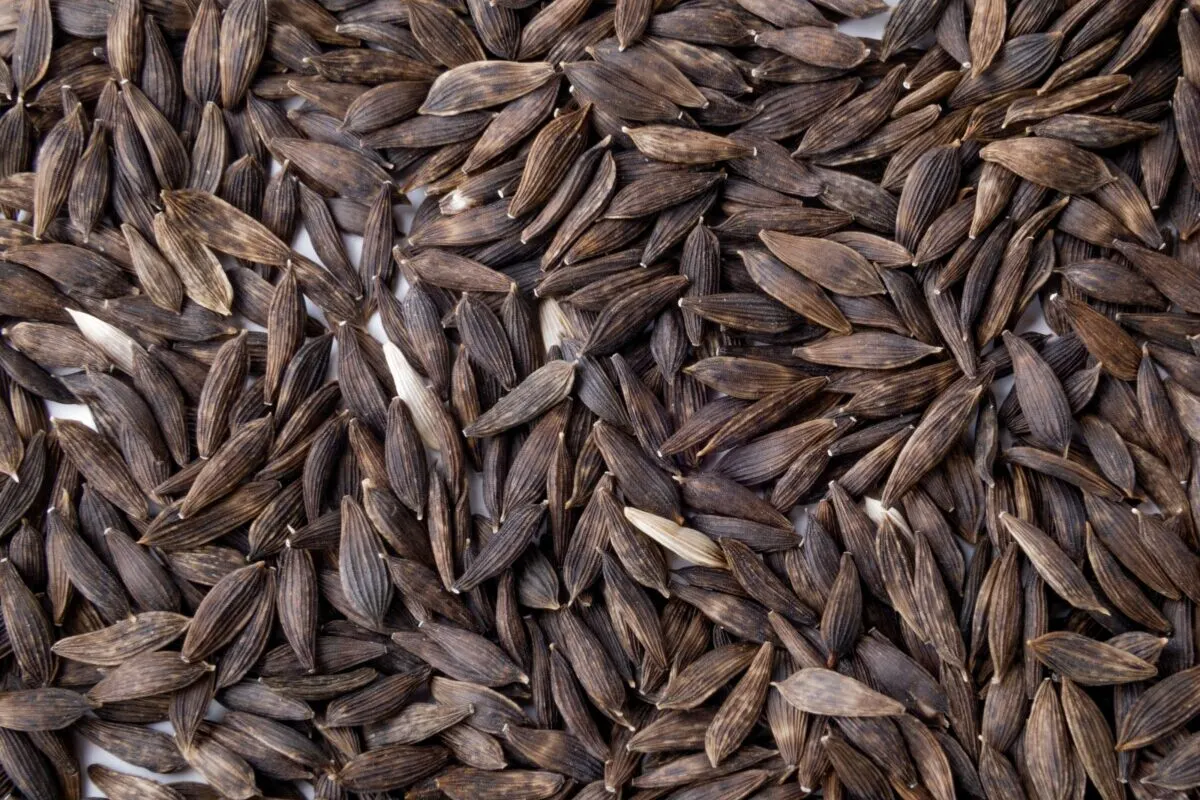
There are plenty of cut-and-come-again varieties that can be grown inside on your windowsills or outside (especially with a little protection) throughout the whole year. Choose the right lettuce varieties, and you can sow and grow this crop literally all year round.
Lettuce seeds can germinate in temperatures as low as 35F and will produce good germination rates at temperatures anywhere between 40F and 80F.
12. Spinach & Mustard Greens
Lettuce isn’t the only leafy green you can sow early.
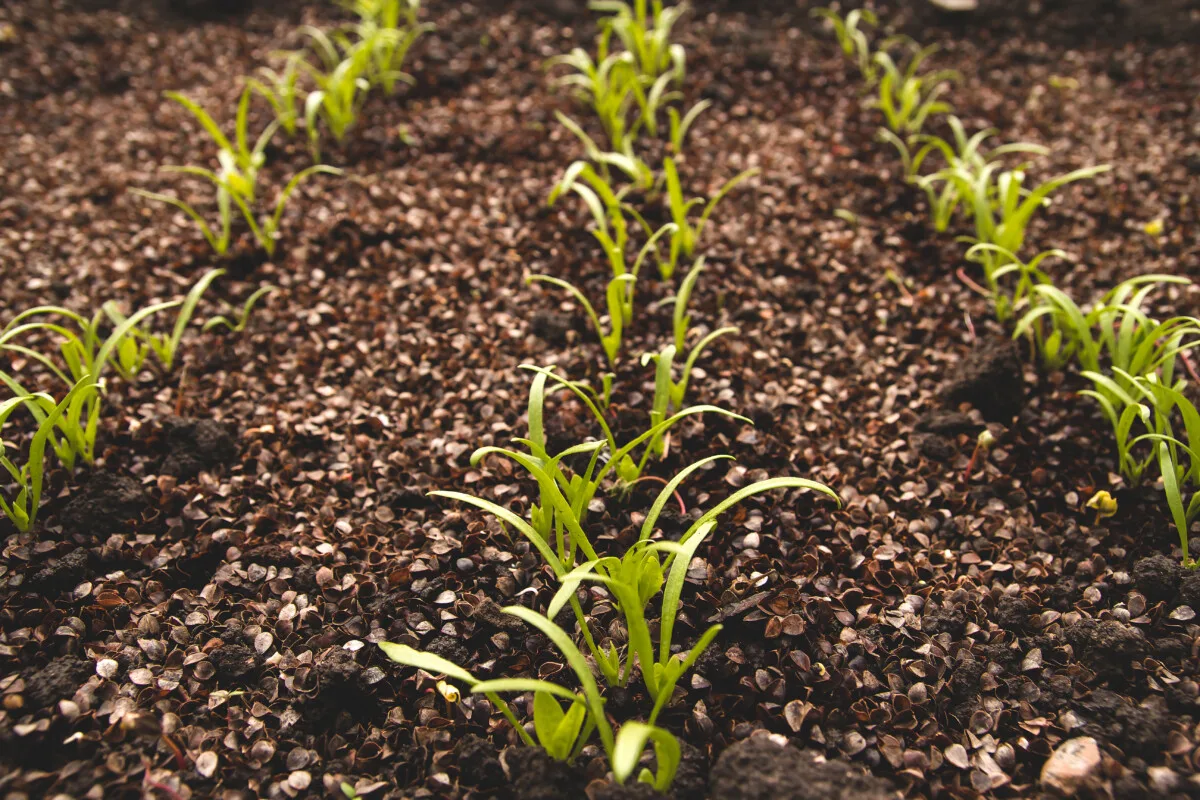
Spinach and many mustard greens can be grown under cover quite early in the year.
Spinach seeds can also germinate in temperatures as low as 35F. But germination rates will be improved if you can keep the temperatures above 45F (and below 75F).
13. Brassicas
Your brassicas – Brussels sprouts, cauliflower, kale, cabbage, broccoli, etc. are all great options for early sowing. Start them in February to be transplanted into your garden once the weather warms.
But if you are growing indoors only, brassica family plants, grown right on your windowsill, can also be great choices for microgreens.
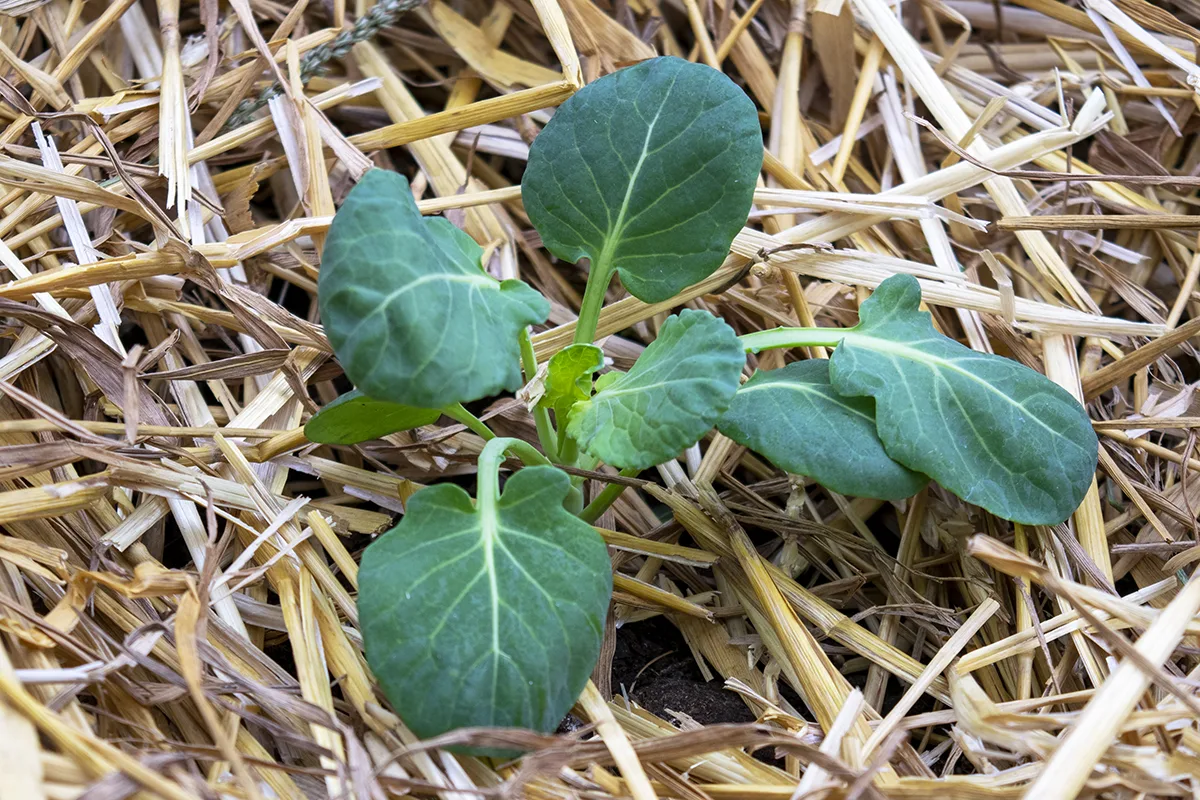
Many brassicas will germinate in temperatures as low as 40F. But most have an optimal range of between around 45F to 85F.
14. Early Carrots
In milder regions, February can be a great time to sow early carrots outside under cloches or in an undercover growing area. This is especially true if you have light and sandy soil that warms more quickly.
Choose carrot varieties intended for early sowing, such as ‘Early Nantes’ or my personal favorite, ‘Kyoto Red.’ They’re super sweet!
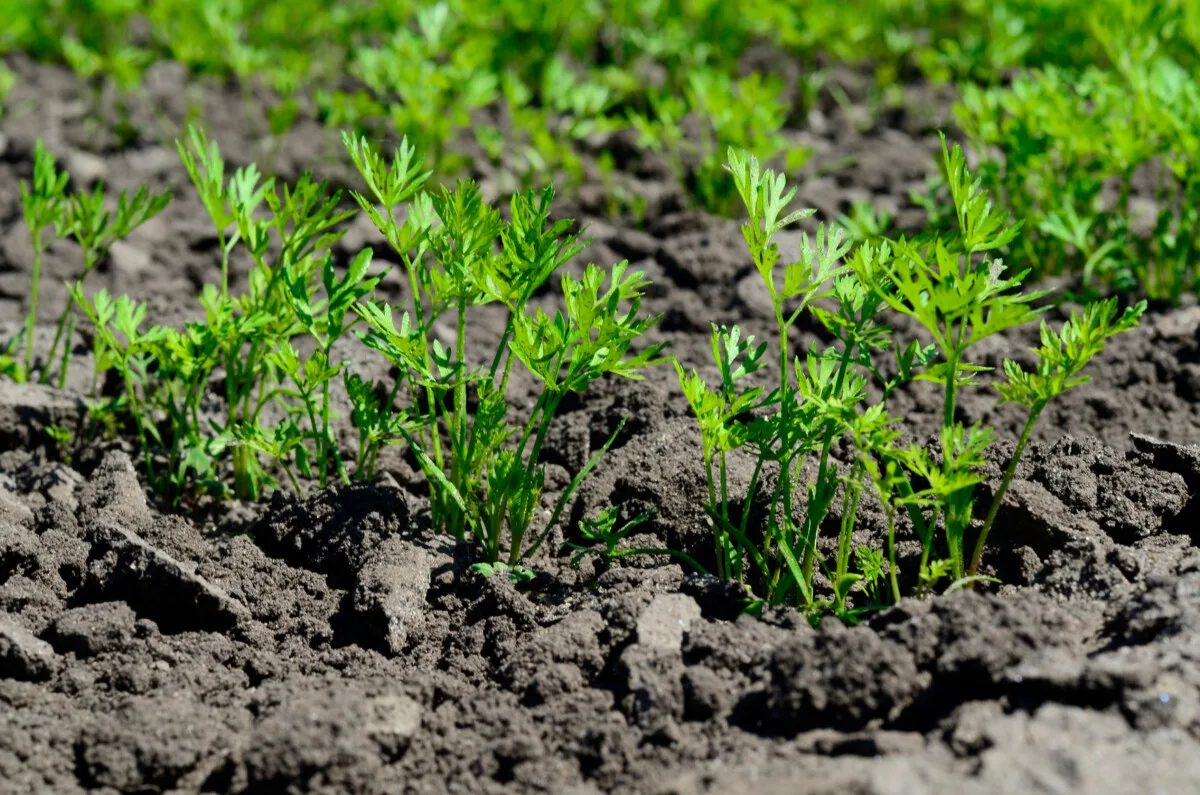
Carrots can germinate from around 40F but may be rather slow to do so. Ideally, you should provide temperatures for germination of between 45F and 85F.
15. Beets & Other Root Crops
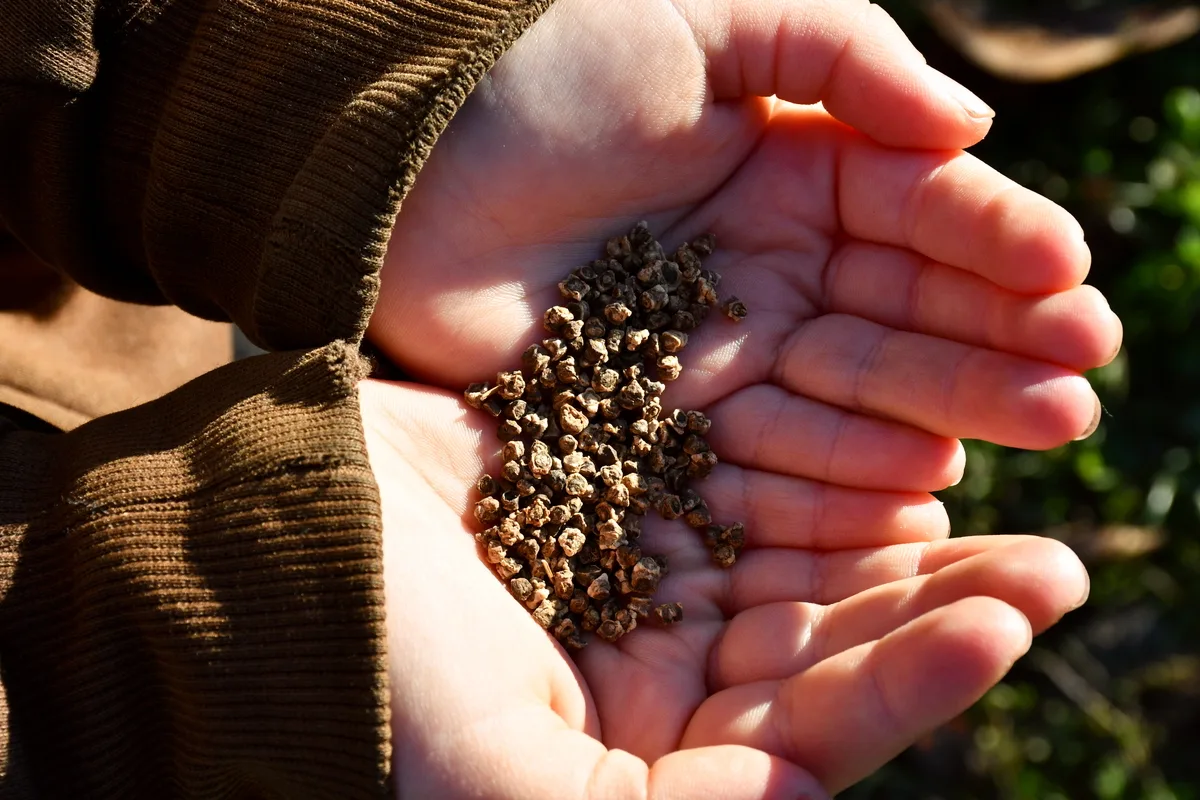
Finally, towards the tail end of winter, you can begin sowing some root crops under cover, such as beets, radishes and parsnips.
Beets will germinate from 40F, with an ideal range of 50F-85F. Parsnips will germinate in even lower temperatures, from 35F, but will also do best from 50F, up to around 70F. Radishes germinate from 40F, with an optimal range of 45F-90F.
Before you grab your seed packets and gardening gloves, though…
It’s Time For Some Tough Love
I’m going to be straight with you. It’s extremely difficult to grow healthy and sturdy seedlings on your windowsill this time of year.
Don’t get me wrong, you absolutely can grow spindly, stretched-out, pale seedlings that will get knocked over with the first spring storm.
Simply put, we don’t have enough daylight hours yet.
If you live in an area with cold winters, your house is usually too cold to support germination and healthy growth (yes, even with the heat on), and most of us don’t have nearly enough south-facing windowsill space for the number of seedlings we need to start.
For years, I bought into the notion that I could grow seedlings with a few plastic cups on my windowsill.
I continuously struggled with moldy plants and damping off. All of my seedlings would stretch toward the light. And each spring, I lost valuable time in the growing season when I planted my pale, leggy little things in the garden. It would take them weeks to acclimate, toughen up and begin to grow.
I finally had a lengthy internal discussion with myself about how much work I was expending on these dinky plants when I could go down to the local greenhouse and buy starts that made my seedlings look terminally ill.
That’s when I decided to get serious about how I started seedlings indoors.
I knew if I wanted robust plants, that meant mimicking greenhouse conditions, and that meant purchasing the right equipment. Yup, sorry to say it, but if you want hardy seedlings, it’s going to take a little investment upfront. I bought heat mats, good grow lights, and a small collapsible greenhouse over a period of a couple of years.
Since then, I have regularly grown massive plants that put the local nursery starts to shame.
When it’s time to plant my seedlings outdoors, they bounce back from transplant shock within days and are much more resistant to pests, diseases and finicky spring weather. All of that is to say, my growing season has gotten off to a much better start these days, which pays off in the long run.
Dealing With Low Light
One of the biggest challenges to starting seeds this early is that we’re still experiencing shorter days and longer nights. (Even if they are slowly getting longer.) If you live in the Northern Hemisphere, this means lower light levels overall, which can lead to poor germination rates as well as stretched-out and pale seedlings.
Fortunately, with the impressive advances in LED grow lights, it’s also one of the easiest challenges to overcome. Quality and inexpensive grow lights are easy to come by these days.
Unfortunately, finding them can be a real headache. Especially when you’re shopping on Amazon, which, let’s be honest, most of us looking for grow lights are. There are tons of options, and it can be difficult to find the quality among the crap.

Lucky for you, I’ve purchased my share of crappy grow lights from Amazon and didn’t give up until I found a set that really does the trick. I can personally recommend these Barrina grow lights. I use these for starting seeds as well as supplemental light for my houseplants in the winter.
The problem I kept running into with other lights was they just weren’t bright enough. They didn’t put out nearly enough light to make a difference. The Barrina grow lights certainly don’t have that problem and we can easily mount them inside our wee little seedling greenhouse.
Germination & Heat
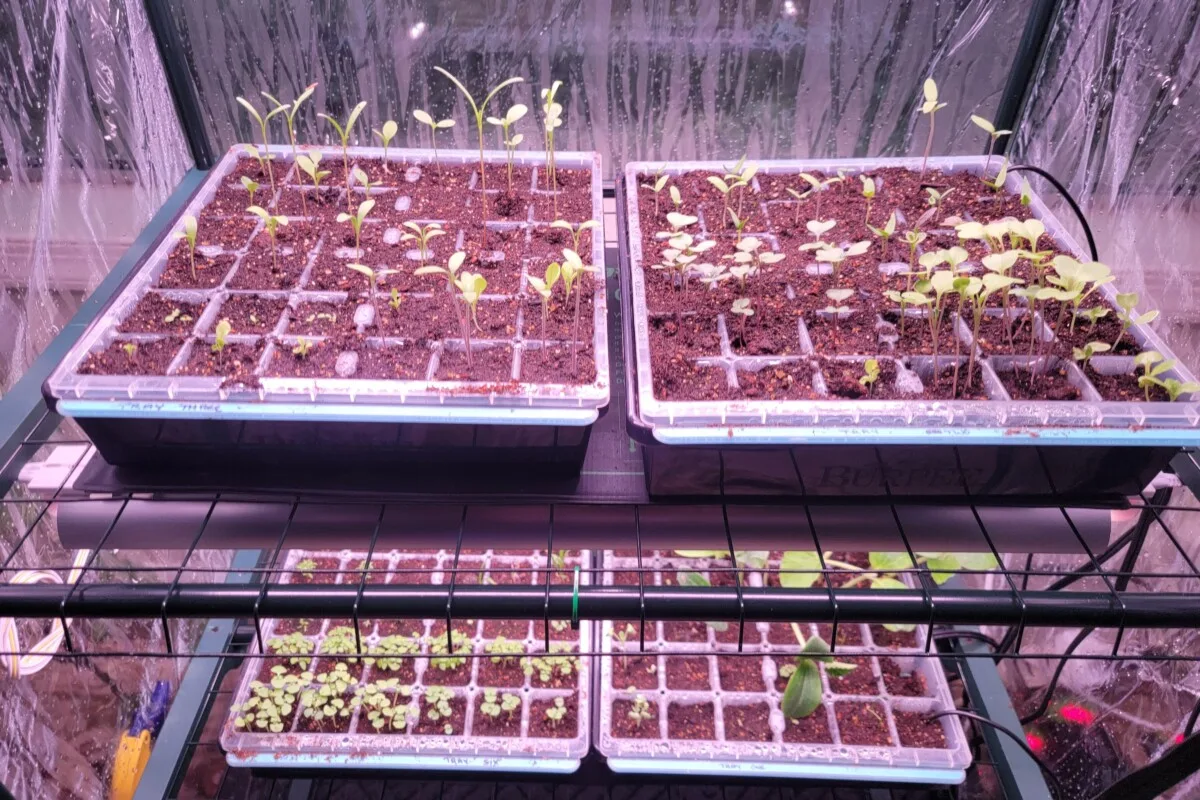
One important issue folks run into when starting seeds indoors is heat. As I mentioned earlier, in the middle of the winter, your home is likely not warm enough to keep soil in the temperature range that many seeds need to germinate. Peppers are notorious for not germinating in cold soil and do best when soil temperatures are between 75 and 85 degrees. And there’s some evidence that cold soil during early development can lead to catfacing in heirloom tomatoes.
A lot of the old tricks for germinating seeds, like placing your seeds on top of the fridge, don’t work as well anymore. Newer appliances are more energy efficient and don’t put off heat like they used to.
Another problem that pops up is assuming grow lights will provide extra heat.
But if you’re using LED grow lights, most don’t generate nearly enough heat to warm the soil. (Although, those Barrina lights kept inside our mini greenhouse keep things just right.)
The easiest solution is to use heating mats to assist in germination. The mats are placed beneath your trays and warm the soil from below. We have three of these mats that we use for our seedlings that need nice, toasty soil to germinate properly. I like them because they come with probes to stick in the soil and a temperature gauge, so you can set the mats to maintain a specific temperature.
Once all of the seeds have germinated, we usually turn the heat down on the mats a little at a time before turning them off entirely. Because we use a little indoor greenhouse, the air inside it stays pretty warm. If you’re not using some sort of enclosure, you may want to keep heating mats under your seedlings.
Good Airflow
Another important consideration is to make sure your seedlings have good airflow. Too damp and you’ll have mold and damping off issues. Too dry and your seedlings will quickly dry out and die.
On the other side of that coin, don’t grow your seedlings near drafty areas or heat sources. You want consistently warm air.
Use Seed Starting Mix
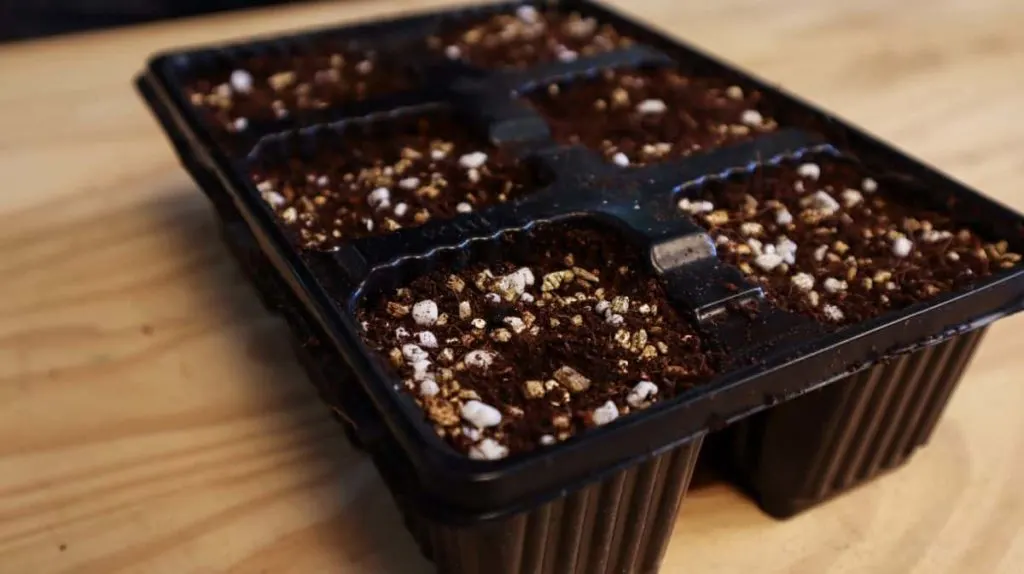
When starting seeds indoors, you’ll have the best luck if you use a lightweight seed-starting mix. These blends are specifically developed to be quick draining and hold moisture, yet still be very light and airy to ensure seeds get the oxygen and light they need to germinate.
I prefer to use a mix with coconut coir rather than peat moss due to the destructive nature of harvesting peat moss. Madison has a great (and easy) recipe for a peat-free seed starting mix.
Sowing Seeds Outdoors Under Cover
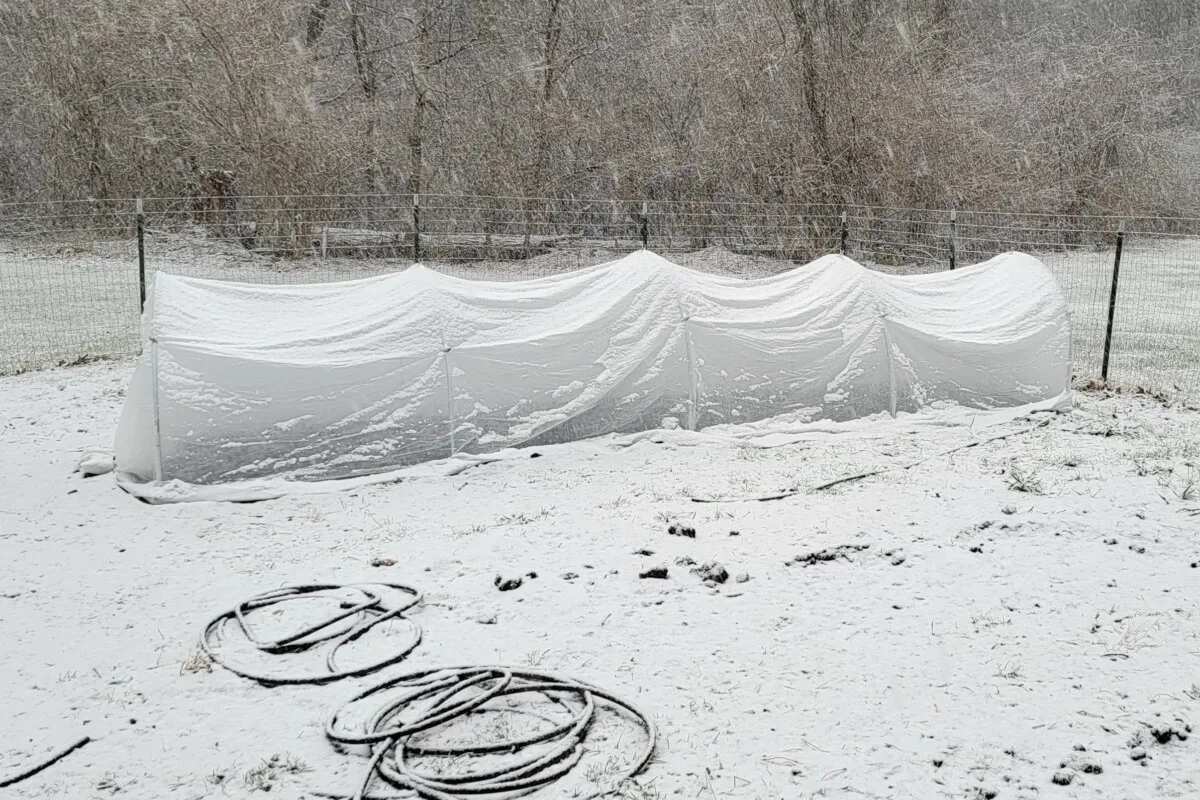
Many of the vegetables I mentioned can be started outdoors under cover. These are all cold-hardy vegetables that you would normally plant in the early spring. While it’s still too cold for them to grow outside unprotected, by using a cold frame or polytunnel, you can get many of them started much earlier in the season.
Pay attention to the extended forecast and use common sense when planting early seeds under cover.
It helps to know your region well. What Fawn can plant in January down in Florida is very different from what I can plant here in Pennsylvania.
Ultimately, this can mean an extra crop of spring peas or fresh lettuce on the table a month sooner than you would expect. Let’s face it: come February, we’re all a little desperate for fresh, homegrown vegetables.
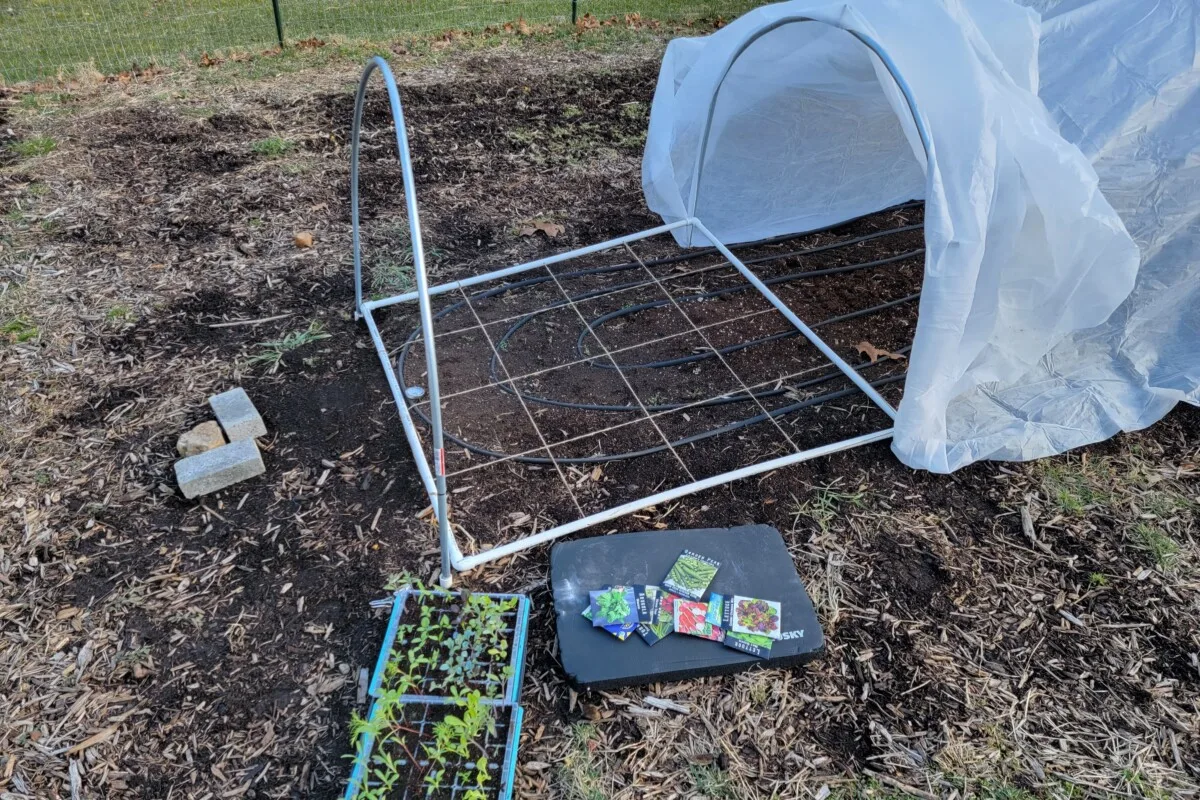
But before you start sowing seeds in the ground, you need to give the soil a chance to warm up a bit if you don’t already have it covered.
(I take the plastic off of my polytunnel for most of the winter so it doesn’t get torn up by the crazy winter wind.)
Set up your cold frame or polytunnel a week or two before you plan to start sowing seeds. Remove the snow if needed and let the soil warm up under cover. And while you’re at it, you might want to grab yourself one of my favorite gardening tools – this little soil thermometer. I bought one several years ago, and I don’t know how I gardened without it for so long. Grab one and plunk it in the soil under your covered growing area. Easy peasy.
Remember, my gardening friend, the growing season might still be a ways off, but there’s no reason why you can’t get a jump on it now. The result will be a bigger and more abundant harvest. Not to mention, you’ll scratch that “green itch.” And why stop with veggies?
Read Next:

Get the famous Rural Sprout newsletter delivered to your inbox.
Including Sunday musings from our editor, Tracey, as well as “What’s Up Wednesday” our roundup of what’s in season and new article updates and alerts.


